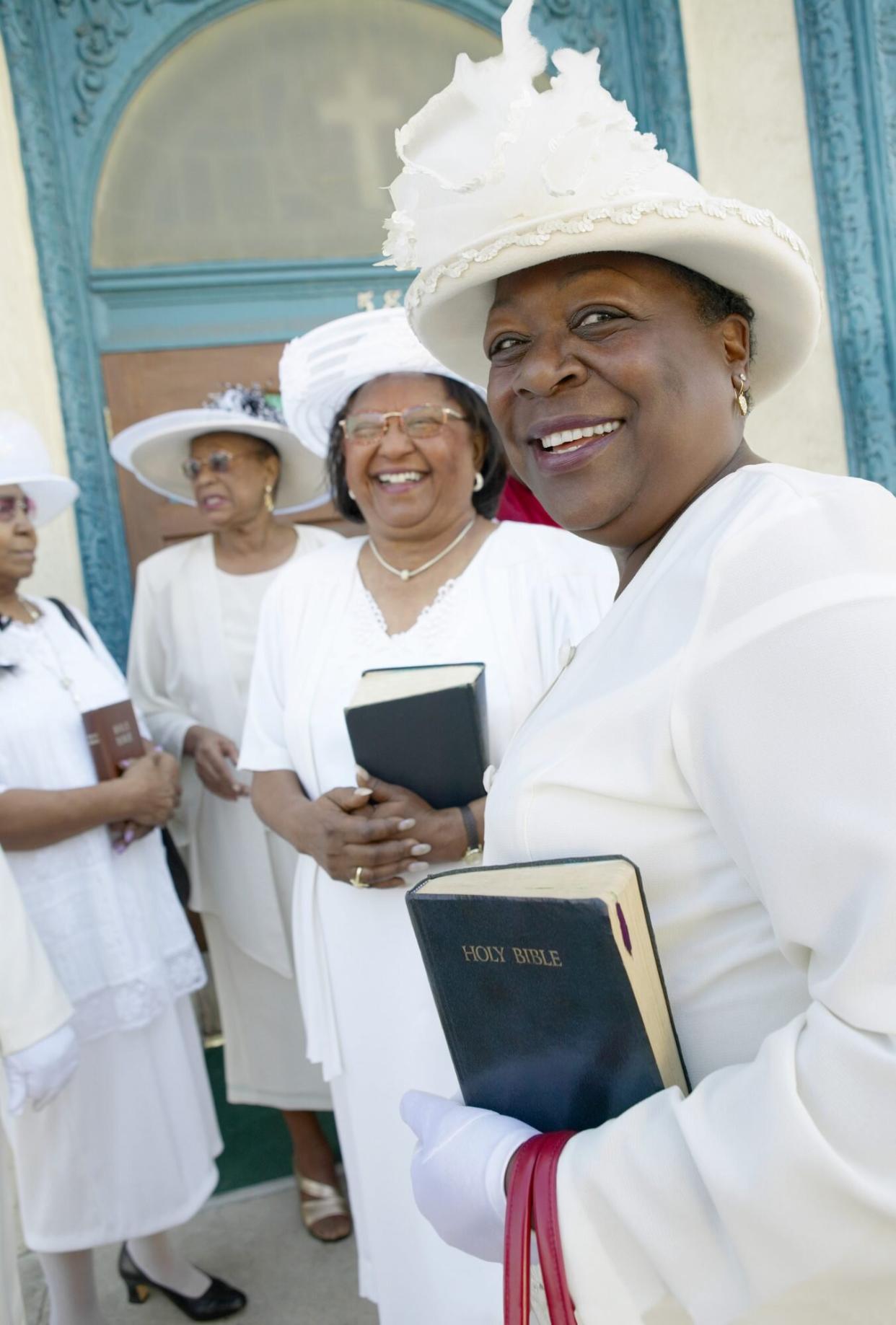What Are Church Hats?

Digital Vision.
In many congregations across the country, statement-making hats are as synonymous with Sunday mornings as robed choristers and gospel readings. For writer Craig Marberry, who grew up in a Chicago congregation of the Church of God in Christ, the spectacular toppers were just part of the sanctuary topography. "In my church, women only wore three types of hats," he says. "Large hats, larger hats, and 'why'd you have to sit in front of me?' hats."
While the pastor's grandson took the tradition for granted as a boy, Marberry gained new appreciation for the fabulous church hats of his youth when he partnered with photographer Michael Cunningham to produce a tome filled with portraits of church-hat-wearing Southern women and their stories—Crowns: Portraits of Black Women in Church Hats, published in October 2000.
"I realized that church hats weren't merely fashion accessories," he says. "They are an expression of faith, as well as a celebration of fashion. Every woman has a different and compelling story about what church hats mean to them."
The tradition of church hats has its roots in scripture—in particular, a passage from one of Paul's letters to the Corinthians declares that women should cover their heads during worship to honor God. "In many religious denominations, women cover their heads for worship as a sign of respect for God and the church hierarchy," says Marberry. "But Black women alone have interpreted that edict with singular flair."
There's an important cultural element at play too, he notes. "African Americans oftentimes think we were severed from our African culture, our heritage because of slavery," says the author. "But there are a lot of things we do without realizing that they're connected to the motherland." Hats are one of them. "Many African societies believe that the soul is housed in the head, not in the heart, and therefore you adorn the head as a way of honoring it," he says.
Perhaps that's part of the reason women leaders of the Civil Rights Movement often marched in their church hats, a symbol of dignity.
"If you look at the photos of Civil Rights marches from the '60s, you'll see women wearing church hats: Dorothy Height, Coretta Scott King, and countless others," says Marberry. "Even Rosa Parks, the mother of the Civil Rights Movement, had on a hat the day that she refused to give up her seat to a white man."
Church hats, in other words, are a proud declaration of who you are, how you worship, and what you stand for. And the grander the hat, the better.
Shortly before they finished shooting portraits and conducting interviews for their book, Marberry realized that they hadn't yet visited a Church of God in Christ, his childhood denomination and one known for especially flamboyant hats. They visited a congregation in his then-hometown of Greensboro, North Carolina, and showed the women some photographs of the other hat-wearing ladies set to appear in the book. One flipped through the photos, seemingly unimpressed. "I said, 'What's wrong? You don't like the photographs?'" he recalls. "And she said, 'No, it's not that. Those are Baptist hats, honey.'"
And while these women of older generations may feel closer to God depending on the height and splendor of their hats, Marberry notes that younger church women he interviewed don't necessarily feel the same attachment to them, citing that they're uncomfortable or mess up their hair.
"Unfortunately, it's a tradition that's dying out with the current hat queens," says Marberry. "But I won't lose faith."

